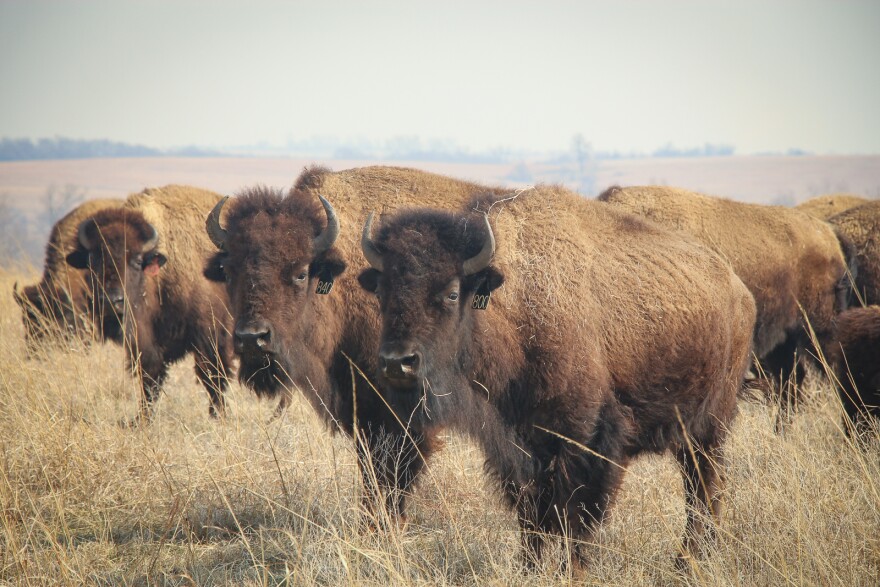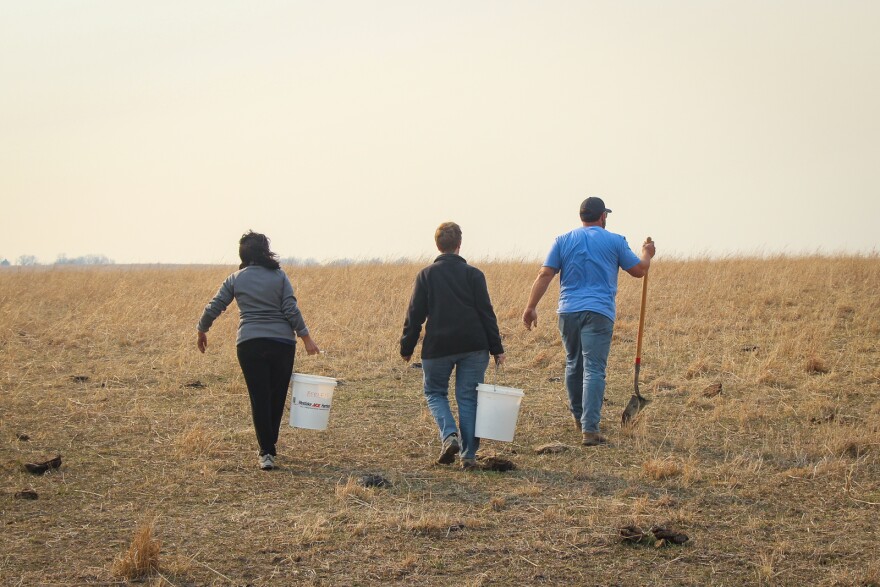KCUR | By Celia Llopis-Jepsen Published June 3, 2024 at 4:01 AM CDT
Scientists are trying to figure out which insect species are struggling, what it means for ecosystems and, ultimately, how it will impact people.
BURLINGAME, Kansas — Without dung beetles, rancher Jamin Horton would be up, um, an unpleasant creek. These efficient manure wranglers break down the huge patties produced by the hulking livestock that wander Horton’s Soldier Creek Bison Ranch. Otherwise, the sheer volume of dung would smother the prairie plants that feed Horton’s bison. “I’m in the grass business,” he said. “The more grass I can feed them, the better off I am.”
The beetles also drill countless holes into the earth, letting rain soak in deep, so that the grasses hold up better during dry spells. They haul dung down those hatches for their larvae, fertilizing the soil.
Insects by the millions work these and countless other tiny miracles across the Great Plains and Midwest every day. They undergird agricultural industries and entire food chains as decomposers, pollinators, predators and prey.
But a growing body of alarming research suggests insect populations are shrinking. Suburban sprawl, climate change, pesticides and other threats take their toll on a class of animal that remains poorly understood — considering its lynchpin role for keeping so much other flora and fauna going.

Scientists have studied just a small fraction of the unfathomably diverse world of insects. That complicates their efforts to pin down answers about which species are ailing — and the repercussions for ecosystems, industries and humanity.
Even basics remain murky, such as how many dung beetles crawl on a swath of Kansas prairie and how this has changed over time.
“I suspect that the dung beetle abundance has gone down,” said Mary Liz Jameson, a Wichita State University biology professor and entomologist. “The same as the native bird abundance.”
The North American bird population plummeted by nearly 3 billion over the past half-century.
Scientists believe diminishing insect numbers likely help explain that. But the humble bugs are notably less understood than their eye-catching, feathered counterparts.
“The things that we keep track of are the larger things,” Jameson said. “The little dung beetles are below our feet, where we’re not really looking that often.”
That’s why Horton has tried his hand at raising and releasing the insects. It’s why he pays attention to which agricultural chemicals and medications can seep into the soil and inadvertently harm the precious decomposers.
It’s also why he invited Jameson, a dung beetle expert, to his ranch to help him learn about the species living there as he considered how to bolster their count.
“Why not try to work with Mother Nature?” he said while wandering the pastures with Jameson in 2022, searching piles of bison dung for beetles. “I don’t know that she’s gonna be too fond if I just keep spraying chemicals on stuff. It’s gonna come back to bite me and it costs me money.”

His wife, Luz Horton, shares his concern that leaving too heavy a mark on the land can backfire, pummeling the plants and creatures that support them.
“We need to work with nature,” she said. “We need to respect nature.”
Many ranchers and farmers want to do right by beneficial insects, but operating with less pesticide (or none at all) can involve steep learning curves and financial risks.
Their efforts range from cutting back on chemicals that fight parasites to funneling livestock through chutes that brush off and trap flies. Some farmers restore hedgerows to lure back pollinators and helpful predators, such as wasps. Others plant a wider variety of crops to rein in certain pests.
The stakes for getting this right are high. Pests wreak billions of dollars of damage annually on crops and livestock, hitting producers and food and commodity markets.
